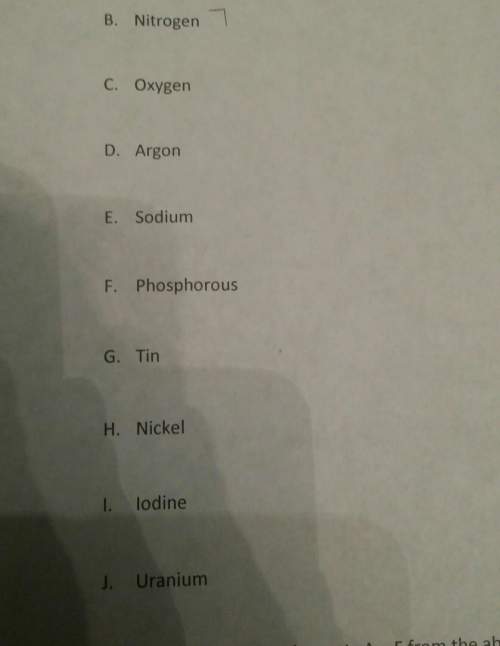
Chemistry, 23.04.2020 20:50 tryintopassenioryear
Shifts in Equilibrium
Quiz Active
2 3
TIME REMAININO
54:54
(9)
HI(g) with an equilibrium constant of 46.3 and a reaction quotient of 525. Which direction will
Consider the reaction Haag) +
the system shift to?
The equilibrium will shift to the left to favor the reactants.
The equilibrium will shift to the right to favor the products
The equilibrium will not shift in any direction
The equilibrium will shift to the forward reaction
Submit

Answers: 3


Another question on Chemistry

Chemistry, 21.06.2019 17:30
What are the major products produced in the combustion of c10h22 under the following conditions? write balanced chemical equations for each. a. an excess of oxygen b. a slightly limited oxygen supply c. a very limited supply of oxygen d. the compound is burned in air
Answers: 2

Chemistry, 22.06.2019 04:00
Two nitro no2 groups are chemically bonded to a patch of surface. they can't move to another location on the surface, but they can rotate (see sketch at right). it turns out that the amount of rotational kinetic energy each no2 group can have is required to be a multiple of ε, where =ε×1.010−24 j. in other words, each no2 group could have ε of rotational kinetic energy, or 2ε, or 3ε, and so forth — but it cannot have just any old amount of rotational kinetic energy. suppose the total rotational kinetic energy in this system is initially known to be 32ε. then, some heat is removed from the system, and the total rotational kinetic energy falls to 18ε. calculate the change in entropy. round your answer to 3 significant digits, and be sure it has the correct unit symbol.
Answers: 2

Chemistry, 22.06.2019 07:20
Describing intermolecular forces use the drop down menus to match the type of intermolecular force to its name dipole dipole interactions dipole induced dipole interactions london dispersion forces hydrogen bond van der waals forces done
Answers: 1

Chemistry, 22.06.2019 10:00
The reactions shown here can be combined to make the overall reaction c(s) + h2o(g) ⇌ co(g) + h2(g) by reversing some and/or dividing all the coefficients by a number. a. c(s) + o2(g) → co2(g) k=1.363×10^69 b. 2 h2(g) + o2(g) → 2 h2o(g) k=1.389×10^80 c. 2co(g) + o2 (g) → 2 co2(g) k=1.477×10^90
Answers: 1
You know the right answer?
Shifts in Equilibrium
Quiz Active
2 3
TIME REMAININO
54:54
(9)
H...
Quiz Active
2 3
TIME REMAININO
54:54
(9)
H...
Questions

Chemistry, 22.08.2019 16:00



Mathematics, 22.08.2019 16:00



Mathematics, 22.08.2019 16:00

Mathematics, 22.08.2019 16:00


Advanced Placement (AP), 22.08.2019 16:00

Mathematics, 22.08.2019 16:00


Social Studies, 22.08.2019 16:00


Social Studies, 22.08.2019 16:00




Mathematics, 22.08.2019 16:00





